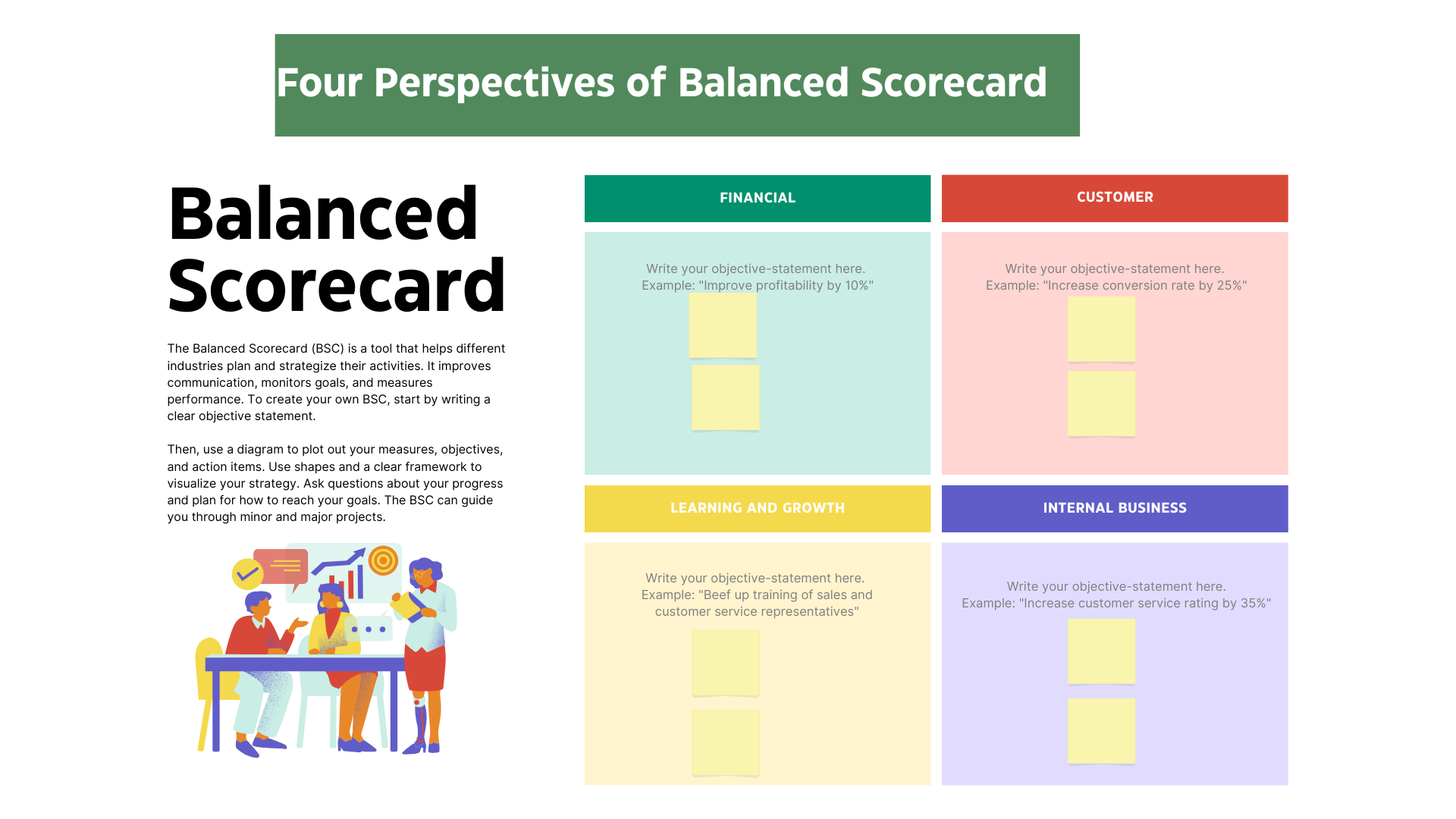In an increasingly competitive business environment, organizations strive to improve performance and achieve strategic objectives. The Balanced Scorecard(BSC) framework, developed by Robert S. Kaplan and David P. Norton, has become a cornerstone for effective strategic management. By translating an organization's vision and strategy into actionable goals, the Balanced Scorecard enables organizations to measure performance from multiple perspectives. This article explores how leading Balanced Scorecard software enhances performance management and drives organizational success.

Understanding the Balanced Scorecard Framework
The Balanced Scorecard framework encompasses four key perspectives:
- Financial Perspective: This perspective evaluates financial performance, focusing on metrics such as revenue growth, profitability, and return on investment. It helps organizations understand how well they are meeting their financial objectives.
- Customer Perspective: This area assesses customer satisfaction, loyalty, and engagement. It emphasizes the importance of delivering value to customers, which is crucial for long-term success and revenue generation.
- Internal Processes Perspective: This perspective examines the efficiency and effectiveness of internal operations. By identifying key processes that drive value, organizations can streamline operations, reduce costs, and improve overall performance.
- Learning and Growth Perspective: This area focuses on employee development, organizational culture, and innovation. It recognizes that investing in employees and fostering a culture of continuous improvement is essential for sustainable success.
The Balanced Scorecard framework provides a comprehensive view of organizational performance, allowing leaders to make informed decisions that align with strategic objectives.
The Role of Leading Balanced Scorecard Software
As organizations implement the Balanced Scorecard framework, managing performance across multiple dimensions can become complex. Leading Balanced Scorecard software simplifies this process by offering a range of tools and features that enhance performance management. Here are some key benefits of using such software:
- Centralized Performance Management: Leading BSC software provides a centralized platform for tracking and managing performance metrics across the organization. This centralization allows for easy access to data and reports, enabling stakeholders to make data-driven decisions.
- Real-Time Monitoring and Reporting: With real-time dashboards and reporting capabilities, organizations can continuously monitor their performance against strategic goals. This instant visibility into key metrics allows for timely adjustments and proactive decision-making.
- Goal Setting and Alignment: Leading BSC software facilitates the establishment of clear, measurable goals that align with the organization’s overall strategy. By defining objectives at all levels, from executive to individual contributors, organizations can ensure that everyone is working towards common goals.
- Enhanced Collaboration: These software solutions promote collaboration across departments by providing a unified view of performance metrics. Teams can work together more effectively, fostering a culture of accountability and shared responsibility for achieving strategic objectives.
- Customizable Dashboards and Reports: Leading Balanced Scorecard software often includes customizable dashboards that allow users to tailor their views based on specific needs. This flexibility ensures that stakeholders have access to the information most relevant to their roles.
- Integration with Other Systems: Many leading BSC software solutions can integrate with existing enterprise systems, such as ERP and CRM platforms. This integration ensures a seamless flow of data, providing a comprehensive view of organizational performance.
Key Features of Leading Balanced Scorecard Software
When selecting leading Balanced Scorecard software, organizations should consider several key features:
- User-Friendly Interface: A user-friendly interface is crucial for ensuring that employees at all levels can effectively utilize the software without extensive training. Intuitive navigation and clear visuals enhance user adoption.
- Performance Tracking and Analytics: Robust performance tracking and analytics capabilities are essential for deriving actionable insights from performance data. Advanced analytics features enable organizations to identify trends, forecast future performance, and make informed decisions.
- Collaboration Tools: Look for software that includes collaboration tools, such as shared workspaces and communication features. These tools facilitate teamwork and enhance alignment across departments.
- Mobile Accessibility: In today's mobile-driven world, having mobile access to performance metrics and dashboards is increasingly important. Leading BSC software often includes mobile-friendly interfaces or dedicated apps for on-the-go performance monitoring.
- Continuous Improvement Features: Leading Balanced Scorecard software should support continuous improvement initiatives by enabling organizations to set and track improvement goals. Features that allow for feedback loops and iterative goal setting enhance overall performance management.
Conclusion
Enhancing performance with leading Balanced Scorecard software empowers organizations to effectively measure, monitor, and manage their strategic objectives. By providing a centralized platform for performance management, these tools enable real-time tracking, goal alignment, and enhanced collaboration. As businesses continue to navigate a rapidly changing landscape, leveraging Balanced Scorecard software will be crucial for organizations seeking to stay competitive and achieve their strategic goals. By investing in the right software solutions, organizations can unlock the full potential of the Balanced Scorecard framework and drive lasting success.